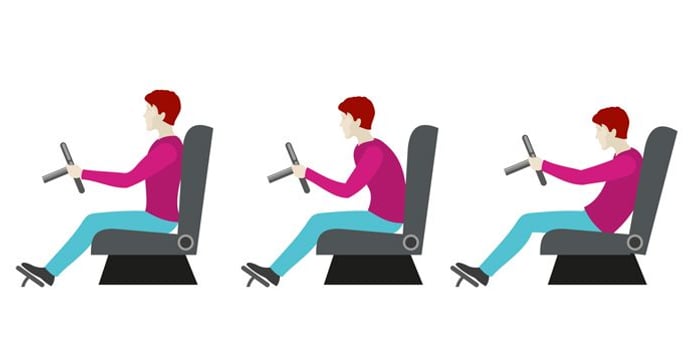How long is your commute? If you're like the average American, you spend about an hour getting to and from work each day.
Sitting Is The New Smoking
It’s a claim that has already triggered major changes in workplace ergonomics. There’s the ball chair, the standing desk, and most recently, the treadmill desk, which has health-conscious employees abandoning their dress shoes for trainers.
But while startups and tech firms lead the charge against sitting, there’s another sedentary behavior few people are talking about.
Your Commute May Be Killing You
According to the United States census, the average American has to travel about 25 minutes to get to work. That’s just over four hours per week, 16 hours per month, and 200 hours per year.
Commuting, whether by car or public transport, may leave employees in a foul mood, but that’s hardly the worst of it. All that time spent sitting can wreak havoc on your health. Research has shown that a long daily commute — and especially a car commute — can take a toll on employees’ personal relationships, bank accounts, mental and emotional well-being, and physical health.
A few of the reported negative effects of a long commute include spikes in blood glucose, high cholesterol, and an increased tendency towards depression, anxiety, insomnia, and social isolation. A study of more than 4,000 Texans found that the longer the commute, the higher the blood pressure. (Blood pressure is a significant risk factor for heart disease and stroke.)
Poor posture is another major concern for commuters, whether they’re in the driver’s seat or the passengers’ seat. Commuters are more likely to report neck and back pain. Why?
Bad Posture Is Hard To Avoid In A Car
The curve of the lower back is lost in the car, which can place additional strain on the spine. Consider, too, that car rides aren’t always smooth. Jolts and bumps are sources of additional spinal strain.
Modern cars are compact, and often lack head space and leg room. Lower, tipped-back seats leave the legs straighter, pulling on the hamstrings and causing the pelvis to roll backwards. The neck, too, suffers when seats are reclined. Drivers may be forced to flex their neck to simply see straight ahead.
Poor posture can lead to discomfort after a lengthy car ride, but in the long-term, its effects on the body are disastrous. After years, pressure can cause the spine to curve, leading to chronic pain and making shock absorption and balance more difficult. As a result, you may be more prone to injuries. Your digestion may suffer, leading to metabolic disorders. If circulation is poor — a common consequence of bad posture — it can lead to varicose veins. Spending a lot of time sitting with poor posture can also increase your risk of cardiovascular disease. Did we mention chronic back pain?
Here’s How to Correct Your Car Posture
While you may not be able to change the time you spend commuting, you can correct your posture. Here’s how.
- Don’t sit too far from the pedals. This can put additional strain on your neck and upper back.
- If the seat has no lumbar support, use a rolled-up towel or lumbar cushion to support your lower back.
- Adjust the seat so that you sit level and as much of your thighs are supported as possible. Your knees should be even with or higher than your hips.
- Your arms should be bent to reach the steering wheel. Change your hand position frequently to increase circulation.
- An automatic car will place less strain on your back.
- On long commutes, stop the car regularly to get out and walk around. Avoid stretching after long periods of driving, as your muscles may be more susceptible to injury. Always warm up before stretching.



